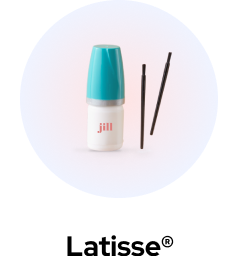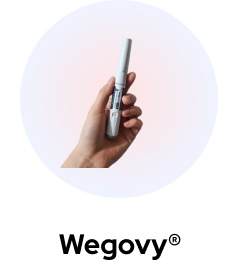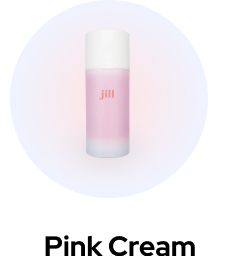Vitamin D plays an integral role in various bodily functions, including the health of our hair. Deficiency in this essential nutrient can lead to thinning hair, among other health issues.
Let’s explore how Vitamin D influences hair health, outlines the symptoms of deficiency, and details the steps to diagnose and address it.
How Long Do Vitamin D Supplements Take to Work for Hair Loss?
Understanding the timeline for potential improvements is key when considering Vitamin D supplementation to combat hair loss. Typically, the effects on hair health become noticeable after several months of consistent supplementation.
This timeframe allows for the activation and support of hair follicles that may have been underperforming due to deficiency.
- Initial Improvements: Some individuals may notice initial improvements in hair strength and scalp health within 2-3 months.
- Significant Results: For visible increases in hair growth or a decrease in hair shedding, it usually takes at least 6 months of regular supplementation.
- Long-Term Health: Consistent and long-term use of Vitamin D supplements, paired with a balanced diet and adequate sun exposure, maximizes the health benefits for hair.
How Do You Spot Low Vitamin D
Recognizing the signs of Vitamin D deficiency is crucial for early intervention and treatment. Here are common symptoms and signs that individuals may notice:
- Fatigue and general tiredness
- Frequent infections or illnesses
- Bone and back pain
- Depression or mood changes
- Impaired wound healing
- Hair loss
- Muscle pain
To diagnose Vitamin D deficiency, a healthcare provider typically conducts a thorough medical evaluation, including asking about symptoms and potential risk factors. The most definitive method is a blood test to measure serum levels of 25-hydroxyvitamin D.
This test provides accurate information on Vitamin D levels in the body, helping to guide treatment decisions such as supplementation dosages or dietary adjustments.
Are You At Risk of Vitamin D Deficiency?
Several factors can increase the risk of developing Vitamin D deficiency: Geographic location, skin pigmentation, age, dietary habits, sun exposure, certain health conditions, use of sunscreen, body weight, and gastrointestinal issues.
Geographic Location: Individuals living in northern latitudes or areas with high pollution may experience less UVB sunlight exposure, leading to decreased Vitamin D synthesis in the skin.
Skin Pigmentation: Those with darker skin have more melanin, which reduces the skin’s ability to produce Vitamin D from sunlight.
Age: Older adults have thinner skin and may produce less Vitamin D from sunlight compared to younger individuals.
Dietary Habits: A diet low in fatty fish, eggs, and fortified foods can lead to inadequate Vitamin D levels.
Sun Exposure: Limited sun exposure due to lifestyle choices or occupational factors can significantly reduce Vitamin D production.
Certain Health Conditions: Conditions like Crohn’s disease, celiac disease, and certain liver and kidney diseases can affect the absorption or conversion of Vitamin D.
Use of Sunscreen: While protecting against skin cancer, regular sunscreen use also limits Vitamin D synthesis in the skin.
Body Weight: Individuals with a higher body fat percentage may sequester more Vitamin D in fat tissues, making it less available for bodily functions.
Gastrointestinal Issues: Conditions that impair fat absorption, such as pancreatitis or inflammatory bowel disease, can decrease the absorption of Vitamin D, affecting its availability and increasing deficiency risks.
Understanding these risk factors and how they contribute to Vitamin D deficiency can help individuals and healthcare providers develop more effective prevention and treatment strategies.
Treatment and Prevention of Vitamin D Deficiency
Addressing Vitamin D deficiency involves a combination of dietary adjustments, supplementation, and lifestyle changes to ensure adequate levels are maintained. Effective treatment and prevention strategies restore healthy vitamin D levels and help mitigate the risk of associated health issues, including impacts on bone health, immune function, and hair loss.
While adjusting your diet and supplement routine to manage Vitamin D levels, it’s important to consider all aspects of potential hair loss treatments. If you’re exploring options like Rogaine, be aware of the side effects it might bring. For a deeper understanding of these effects and how to handle them, check out our detailed guide on Rogaine side effects.
Through Diet and Supplements
To boost Vitamin D levels through diet and supplements, consider the following sources:
- Fatty fish such as salmon, mackerel, and tuna
- Egg yolks
- Cheese
- Beef liver
- Fortified foods such as milk, cereals, and orange juice
- Vitamin D supplements such as Vitamin D3 or D2 supplements
The recommended daily intake of Vitamin D varies by age, lifestyle, and health conditions. Below is a table that outlines these recommendations*:
Age Group or Condition | Recommended Daily Vitamin D Intake |
Infants (0-12 months) | 400 IU (10 mcg) |
Children (1-18 years) | 600 IU (15 mcg) |
Adults (19-70 years) | 600 IU (15 mcg) |
Adults (>70 years) | 800 IU (20 mcg) |
Pregnant and breastfeeding women | 600 IU (15 mcg) |
Individuals with limited sun exposure | Adjusted higher as per medical advice |
*Source: What is vitamin D and what does it do?
Through Sun Exposure
To safely optimize Vitamin D synthesis through sun exposure, follow these guidelines:
- Expose skin to sunlight for 10-30 minutes several times per week, depending on skin tone.*
- Avoid sun exposure between 10 AM and 4 PM when the sun’s rays are strongest, to reduce the risk of skin damage.
- Expose larger areas of the skin, such as arms, legs, and back, without sunscreen for short periods.
- Gradually increase exposure time to build tolerance and maximize Vitamin D synthesis without harming the skin.
*Source: Sunlight and Your Health
The effectiveness of sun-induced Vitamin D synthesis depends significantly on geographical location, skin type, and the time of day. For instance, people living further from the equator may need longer sun exposure, especially during winter.
Skin type also plays a crucial role, as individuals with darker skin require longer exposure due to higher melanin content, which naturally blocks some UV radiation. Early morning and late afternoon sun are less effective than midday sun for Vitamin D production.
Alongside addressing Vitamin D deficiency, exploring other hair growth treatments can be beneficial. For detailed guidance on applying Rogaine, a popular treatment option, visit our comprehensive guide on how to use Rogaine. This resource will provide you with step-by-step instructions to maximize your hair regrowth potential.
How to Avoid Recurring Vitamin D Deficiency
To prevent recurring Vitamin D deficiency, adopt these strategies:
- Include Vitamin D-rich foods in your diet regularly.
- Consider Vitamin D supplementation as per healthcare advice.
- Increase sun exposure safely, especially during the sunnier months.
- Engage in outdoor activities that promote sun exposure, such as walking or cycling.
- Monitor weight to prevent excess body fat from affecting Vitamin D levels.
- Regularly test Vitamin D levels, especially if you have a history of deficiency or are at risk due to other factors.
The importance of regular monitoring of Vitamin D levels cannot be overstated, especially for those with a history of deficiency or risk factors such as darker skin, living in northern latitudes, or having pre-existing health conditions.
Regular blood tests and consultations with a healthcare provider can help manage and maintain adequate Vitamin D levels, ensuring long-term health benefits and preventing the recurrence of deficiency-related symptoms.
Key Takeaways
- Diverse Vitamin D Sources: Maintain optimal Vitamin D levels through a balanced intake of foods rich in Vitamin D, supplements, and regular, safe sun exposure.
- Guidelines for Sun Exposure: Effective Vitamin D synthesis requires moderate sun exposure—about 10-30 minutes several times a week, avoiding peak sun intensity hours.
- Regular Monitoring: To prevent recurrence, check Vitamin D levels regularly and adjust lifestyle and diet as needed, especially for those at risk or previously deficient.
Frequently Asked Questions
Can Too Much Vitamin D Lead to Hair Loss?
Vitamin D toxicity, caused by excessive supplementation, can result in health issues such as kidney problems and disrupt calcium balance, potentially impacting hair health. Although direct evidence linking high Vitamin D levels to hair loss is limited, managing supplementation under medical supervision is crucial to avoid such risks.
How Quickly Will My Hair Grow Back After I Have Fixed My Vitamin D Deficiencies?
Hair regrowth speed varies after addressing Vitamin D deficiencies, depending on factors like the severity and duration of the deficiency, overall health, and effectiveness of supplementation. Noticeable hair improvement often occurs within months, but full-density restoration might take longer.
Is Hair Loss Caused by Vitamin D Deficiency Reversible?
Hair loss due to Vitamin D deficiency is generally reversible with appropriate treatment. Increasing Vitamin D intake through diet, supplements, and sun exposure can stimulate new hair follicle growth and promote regrowth. The success of regrowth can also depend on genetic factors and overall health, highlighting the importance of a holistic treatment approach.












 (US)
(US)